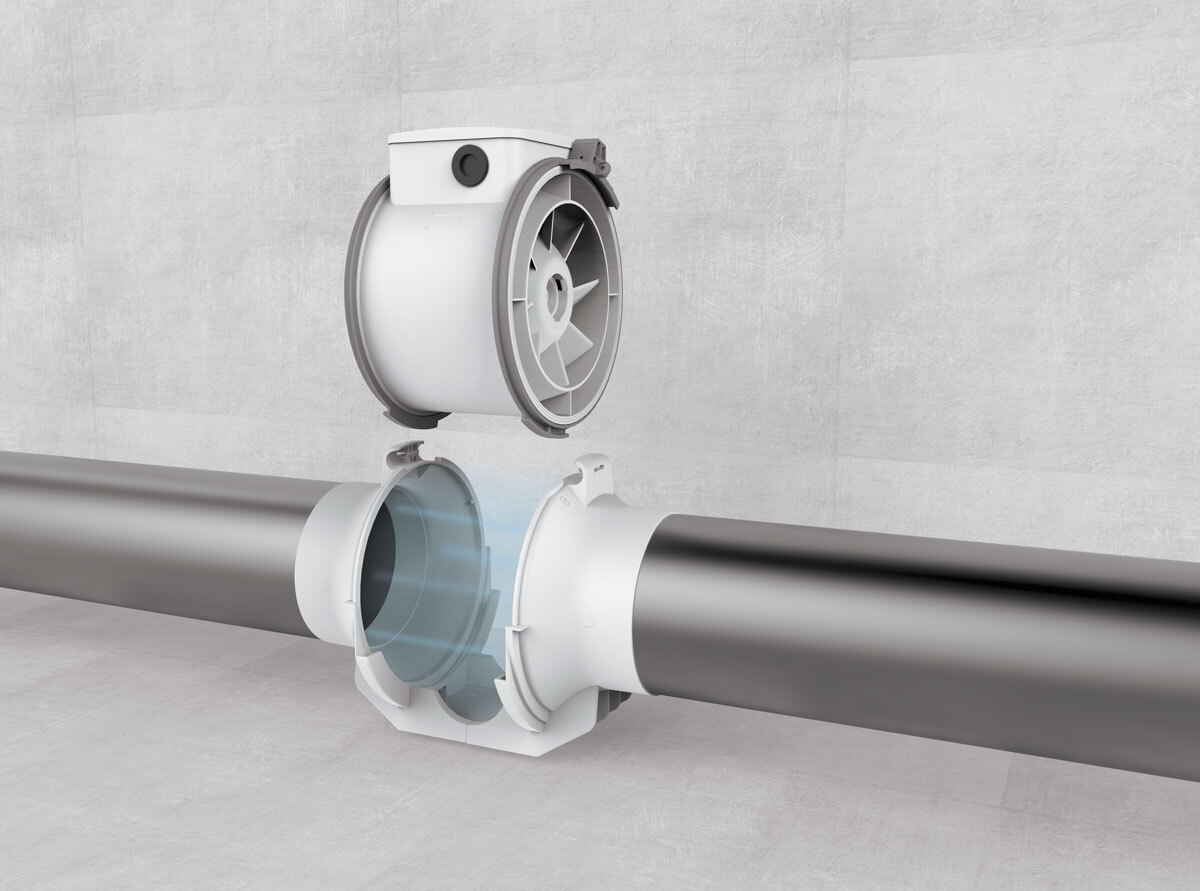Education & Advice
How does an Inline Fan Work?
Inline Exhaust Fan – The Basics
An inline exhaust fan is best defined as a fan that is mounted inline (inside or connected to ducting) that is used for extraction purposes. An inline fan does not sit directly on the plasterboard or ceiling, instead it is typically located inside the attic or roofspace a little bit further away from the bathroom.
Benefits of using an inline fan
- Reduced Noise – As the fan is located further away in the roofspace and not directly above you the noise levels within the room you are extracting from will be less. Furthermore if your roofspace is well insulated or if you look at purchasing a ‘silent model’ inline fan its one of the quietest ventilation solutions available.
- High Power – Inline fans are available in large sizes with very high power motors. Quite often this type of power is simply not available from a standard ceiling mounted or wall mounted extraction fan.
- Length of duct run Inline fans are engineered to work with ducting. This means they will retain a greater percentage of their advertised capacity in comparison to basic extraction fans. This is particularly useful if you have a great distance from the extraction point to the outlet. For example if you want to extract your bathroom to a roof vent and the distance is relatively long (6m or more). This makes the fans useful for other applications such as heat transfer and sub floor ventilation.
- More than one intake point – With an inline fan it is possible to create multiple inlet or outlets by using a Y Junction or BTO. This is particularly useful if you have a large bathroom and wish to have 2 intake points, or again for a heat transfer kit that services multiple rooms.
Parts needed to create an inline system
-
- Intake Vent – You will need an internal vent which will be the extraction point for your system. These grilles and vents are available in a variety of shapes, sizes and colours to suit your decor. It is advisable to purchase a vent that will suit the diameter of ducting you intend to use.
- Ducting – You will need ductwork to connect the vent to the motor and the motor to the external vent. We sell many types of ducting, for bathroom extraction standard flexible ducting is most commonly used. We also stock insulated ducting and semi rigid ducting. Its best to keep the ducting as straight and direct as possible.
- Fan – the fan is the main component in the system and your choice of fan will be dependent on factors such as the size of your room, the application etc. Use our
- Exhaust fan calculator – to help determine the extraction rate required. Generally its a good idea to keep the diameter of the fan the same as the ducting you are using. Remember the fn has been engineered to suit a certain diameter of ducting, by reducing the diameter of ducting you will be lowering the capacity of the fan. If you do need to reduce the ducting its best to choose a large fan and reduce by a small increment.
- External Vent – This finishes off the system and may be an external wall vent or a roof mounted vent. Lots of different options are available.
Extras – A backdraft shutter can be installed along the ductwork to prevent backflow of air and also to keep the system closed when the fan is not in operation. To hold everything together most of the time duct tape is sufficient, however you can also use worm clamps.
Why not take a look at our range of easy and convenient pre packaged inline fan kits?
This article was updated on July 2024 by our in house specialist Andy.

